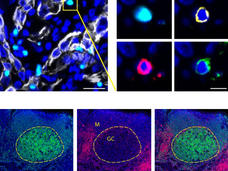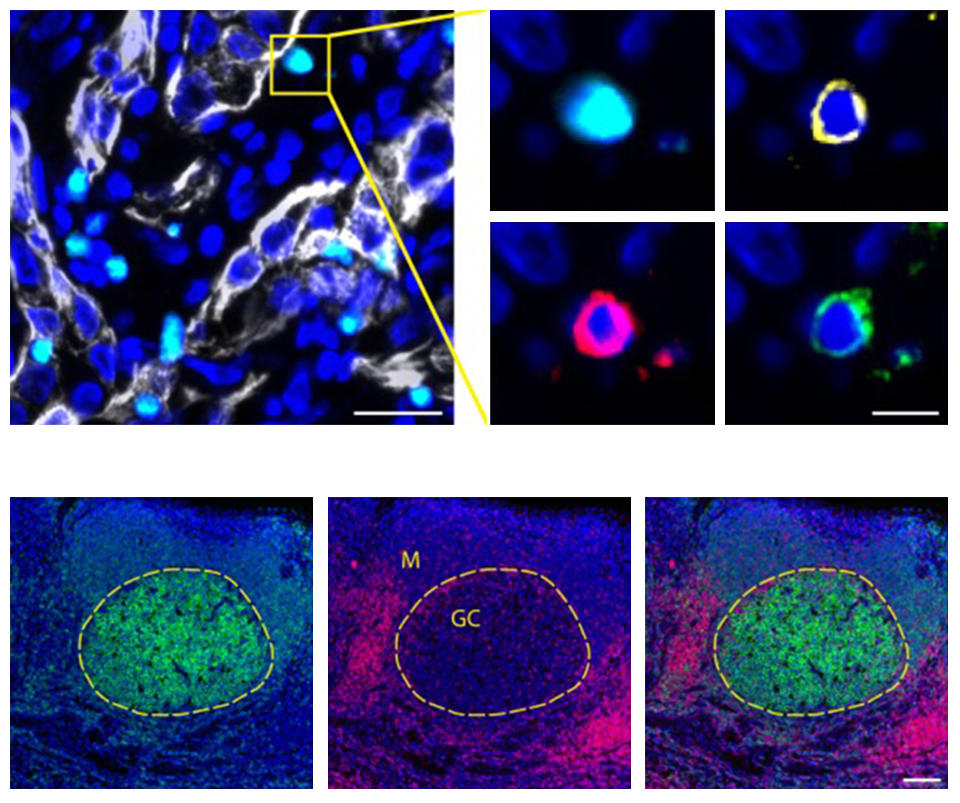, by Dinah Singer, Ph.D.
Hundreds of investigators participating in the Cancer MoonshotSM to accelerate cancer research met recently to provide updates on their progress since the initiative was announced in 2016.
Investigators from nine different research networks presented on topics of interest across the Moonshot, such as the tumor microenvironment, novel drug targets, emerging treatment approaches, and data integration and visualizations.
The 3-day meeting—held last November in Rockville, MD—marked the first time that many of the research networks supported by the Moonshot had gathered to share their results and exchange ideas.
The Moonshot research networks include multiple groups of investigators focused on accelerating progress in certain areas of cancer research. For example, one network is devoted to immunotherapy, while another is focused on fusion proteins, a major driver of childhood cancers.
A Blue Ribbon Panel of experts identified the Moonshot research areas in 2016, making its recommendations in a report after surveying the research landscape and getting input from the broader cancer community.
Progress over the past 3 years has been substantial, and we held the workshop to give investigators an opportunity to share findings on topics that cut across the research networks. During the first 2 days of the workshop, individual networks held their annual meetings.
But the third day brought everyone together to share the latest research on topics of broad interest to investigators across the Moonshot. It was invigorating to hear these presentations and witness first-hand the exciting progress being made possible by this important initiative.
As the examples of this work highlighted below demonstrate, the Moonshot has been achieving its intended goals and is rapidly advancing the science for a range of research priorities.
Advancing Immunotherapy for Adults and Children
Several presenters discussed research on immunotherapy. Although immunotherapy has shown great promise, many patients either do not respond or relapse. The Immuno-Oncology Translational Network aims to accelerate the discovery of new immune targets for cancer treatments and to develop new immunotherapies for treating and preventing cancers in adults.
Eliezer Van Allen, M.D., of the Dana-Farber Cancer Institute, described the development of models to predict whether patients with advanced melanoma will develop resistance to immunotherapy. The predictive models integrate patients’ clinical information and the molecular characteristics of their tumors.
Meanwhile, the Pediatric Immunotherapy Discovery and Development Network is working to advance preclinical research on immunotherapy for children and adolescents with cancer. Investigators are discovering and characterizing new targets for immunotherapies and designing experimental models to test the effectiveness of immunotherapies in children.
Crystal Mackall, M.D., of the Stanford University School of Medicine, described a new way to improve cancer-fighting immune cells called CAR T cells by making them less prone to a phenomenon known as exhaustion. The approach prolonged the activity of these cells and made them more effective against laboratory-grown human cancer cells and in mice.
Dr. Mackall and her colleagues are developing a clinical trial to test the approach in children with cancer.
Many childhood cancers are caused by genetic changes called translocations, which can lead to fusion proteins. A Moonshot consortium called Fusion Oncoproteins in Childhood Cancers (FusOnC2) is examining the molecular mechanisms by which fusion proteins drive pediatric cancers and developing strategies for treating tumors with these proteins.
One of the FusOnC2 investigators, Kimberly Stegmaier, M.D., also of Dana-Farber, described new approaches for targeting a fusion oncoprotein called EWS-FLI1 in children with Ewing sarcoma.
The Pre-medical Cancer Immunotherapy Network for Canine Trials promotes the development of cancer immunotherapies through an approach known as comparative oncology research. Cancers that occur naturally in pets such as dogs and cats may be remarkably similar to certain cancers in humans in terms of their genetics and responses to treatment.
Stephen Dow, D.V.M., Ph.D., of Colorado State University, described studies testing the blood pressure drug losartan (Cozaar) in dogs with metastatic bone cancer. Losartan is known to modify certain immune cell populations, and previous research has demonstrated that it slows metastatic progression in mice.
Investigating the Biology of Tumors
Developing a better understanding of the biology of tumors, including how they develop, spread, and respond to treatments, is a goal of the Human Tumor Atlas Network, which is creating detailed maps of a variety of cancers. The atlases will provide information about the molecular characteristics of human cancers and their surrounding environments over space and time.
Orit Rozenblatt-Rosen, Ph.D., of the Broad Institute, discussed a variety of approaches for profiling the molecular characteristics of fresh and frozen tumor samples that could be used to create atlases of the complex tumor ecosystem. These approaches included the sequencing of RNA from individual cells.
Other presenters also highlighted new technologies or innovative uses of existing technologies. For example, Peter Sorger, Ph.D., of Harvard Medical School, described the development of a collection of images and data that could help to create cancer atlases.
These kinds of state-of-the-art technologies for profiling tumor cells and immune cells are being investigated by laboratories in the Cancer Immune Monitoring and Analysis Centers & Cancer Immunologic Data Commons Network.
Another presenter, R. Michael Angelo, M.D., Ph.D., of Stanford University, described a technology called multiplexed ion beam imaging by time of flight, which produces images that depict the expression of multiple proteins in tumor samples. The technology could be used to explore emerging research questions about cancer and immunology.
Additional presentations focused on modifying the tumor microenvironment, overcoming resistance to cancer therapies, and developing new models for research.
The Pancreatic Cancer Microenvironment Network aims to better understand the tumor microenvironment in patients with pancreatic cancer and use this knowledge to develop new approaches to treatment.
Rakesh Jain, Ph.D., of Massachusetts General Hospital, presented research showing that drugs called angiotensin receptor blockers, which are commonly used to treat hypertension, could modify the tumor microenvironment and enhance the effectiveness of immunotherapy in mice.
The Drug Resistance and Sensitivity Network is developing new experimental models for investigating how tumors resist therapies and for exploring ways to make cancers more sensitive to treatments. A goal of the interdisciplinary effort is to identify molecular targets for the development of new cancer treatments that prevent or overcome drug resistance.
Peter Nelson, M.D., of the Fred Hutchinson Cancer Research Center, gave a presentation on potential approaches for overcoming treatment resistance in prostate cancer. He described a combination therapy that was effective in an experimental model of aggressive small-cell neuroendocrine prostate cancer.
Another presenter, Jeffrey Chuang, Ph.D., of the Jackson Laboratory in Maine, discussed new research on patient-derived xenografts (PDX) mouse models, which can be used to test a tumor’s response to therapy and to identify promising drugs for certain patients. Dr. Chuang shared results from a study aimed at improving the reliability of these models for laboratory research.
Many PDX models have been developed in isolated programs, and this has led to a lack of standardization in these systems, as well as difficulty validating and replicating the results. The Patient-Derived Xenografts Development and Trial Centers Research Network is working to accelerate translational research using PDX databases.
Supporting Moonshot Goals
All of the research networks support the three goals of the Moonshot: to accelerate progress in our understanding of cancer, to encourage collaborations and partnerships, and to enhance data sharing. Each goal is critical to the Moonshot program.
Our work toward the first two goals was on display at the workshop. Not only did the meeting highlight recent advances in cancer research, but the gathering brought people together to exchange ideas through formal presentations and panel discussions as well as impromptu conversations.
We also held a session at the workshop on the Moonshot’s third goal—enhancing data sharing. Researchers were reminded that the Moonshot requires that all data and results funded by the initiative are made publicly available at the time of publication. That means that all Moonshot-funded results have to be published in an open-access format.
In just the last few years, the Moonshot has challenged us to think differently, to approach our research differently, and to think of ways to be more innovative as we accelerate progress in cancer research.
As the findings of Moonshot initiatives are published in the coming years, we can expect to gain insights into cancer that will benefit patients while giving investigators new avenues to pursue.







